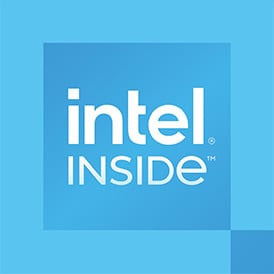Intel Processor 300 vs AMD EPYC 9365
Last updated:
| Note: The information shown below is based on a pre-sample. Technical details or benchmark results may be different in the final version of this processor. |
CPU comparison with benchmarks

|

|
|
| Intel Processor 300 | AMD EPYC 9365 | |
CPU comparisonIntel Processor 300 or AMD EPYC 9365 - which processor is faster? In this comparison we look at the differences and analyze which of these two CPUs is better. We compare the technical data and benchmark results.
The Intel Processor 300 has 2 cores with 4 threads and clocks with a maximum frequency of 3.90 GHz. Up to 192 GB of memory is supported in 2 memory channels. The Intel Processor 300 was released in Q1/2024. The AMD EPYC 9365 has 36 cores with 72 threads and clocks with a maximum frequency of 3.30 GHz. The CPU supports up to 6144 GB of memory in 12 memory channels. The AMD EPYC 9365 was released in Q4/2024. |
||
| Intel Processor U (4) | Family | AMD EPYC (129) |
| Intel Core i 1400P/1400U (2) | CPU group | AMD EPYC 9005 (21) |
| 14 | Generation | 5 |
| Raptor Lake U Refresh | Architecture | Turin (Zen 5 / Zen 5c) |
| Mobile | Segment | Desktop / Server |
| -- | Predecessor | -- |
| -- | Successor | -- |
|
|
||
CPU Cores and Base FrequencyThe Intel Processor 300 has 2 CPU cores and can calculate 4 threads in parallel. The clock frequency of the Intel Processor 300 is 3.90 GHz while the AMD EPYC 9365 has 36 CPU cores and 72 threads can calculate simultaneously. The clock frequency of the AMD EPYC 9365 is at 3.30 GHz. |
||
| Intel Processor 300 | Characteristic | AMD EPYC 9365 |
| 2 | Cores | 36 |
| 4 | Threads | 72 |
| normal | Core architecture | normal |
| Yes | Hyperthreading | Yes |
| No | Overclocking ? | No |
| 3.90 GHz | Frequency | 3.30 GHz |
| -- | Turbo Frequency (1 Core) | -- |
| -- | Turbo Frequency (All Cores) | -- |
Internal GraphicsThe Intel Processor 300 or AMD EPYC 9365 has integrated graphics, called iGPU for short. The iGPU uses the system's main memory as graphics memory and sits on the processor's die. |
||
| Intel UHD Graphics 710 | GPU | no iGPU |
| 0.30 GHz | GPU frequency | -- |
| 1.45 GHz | GPU (Turbo) | -- |
| 13 | GPU Generation | -- |
| 14 nm | Technology | |
| 3 | Max. displays | |
| 16 | Compute units | -- |
| 128 | Shader | -- |
| No | Hardware Raytracing | No |
| No | Frame Generation | No |
| 32 GB | Max. GPU Memory | -- |
| 12 | DirectX Version | -- |
Hardware codec supportA photo or video codec that is accelerated in hardware can greatly accelerate the working speed of a processor and extend the battery life of notebooks or smartphones when playing videos. |
||
| Intel UHD Graphics 710 | GPU | no iGPU |
| Decode / Encode | Codec h265 / HEVC (8 bit) | No |
| Decode / Encode | Codec h265 / HEVC (10 bit) | No |
| Decode / Encode | Codec h264 | No |
| Decode / Encode | Codec VP9 | No |
| Decode / Encode | Codec VP8 | No |
| Decode | Codec AV1 | No |
| Decode / Encode | Codec AVC | No |
| Decode | Codec VC-1 | No |
| Decode / Encode | Codec JPEG | No |
Memory & PCIeThe Intel Processor 300 can use up to 192 GB of memory in 2 memory channels. The maximum memory bandwidth is 76.8 GB/s. The AMD EPYC 9365 supports up to 6144 GB of memory in 12 memory channels and achieves a memory bandwidth of up to 480.0 GB/s. |
||
| Intel Processor 300 | Characteristic | AMD EPYC 9365 |
| DDR5-4800, DDR4-3200 | Memory | DDR5-6000 |
| 192 GB | Max. Memory | 6144 GB |
| 2 (Dual Channel) | Memory channels | 12 |
| 76.8 GB/s | Max. Bandwidth | 480.0 GB/s |
| No | ECC | Yes |
| 2.50 MB | L2 Cache | -- |
| 6.00 MB | L3 Cache | 144.00 MB |
| 4.0 | PCIe version | 5.0 |
| 20 | PCIe lanes | 128 |
| 39.4 GB/s | PCIe Bandwidth | 504.1 GB/s |
Thermal ManagementThe thermal design power (TDP for short) of the Intel Processor 300 is 46 W, while the AMD EPYC 9365 has a TDP of 300 W. The TDP specifies the necessary cooling solution that is required to cool the processor sufficiently. |
||
| Intel Processor 300 | Characteristic | AMD EPYC 9365 |
| 46 W | TDP (PL1 / PBP) | 300 W |
| -- | TDP (PL2) | -- |
| -- | TDP up | -- |
| -- | TDP down | -- |
| 100 °C | Tjunction max. | 100 °C |
Technical detailsThe Intel Processor 300 is manufactured in 10 nm and has 8.50 MB cache. The AMD EPYC 9365 is manufactured in 4 nm and has a 144.00 MB cache. |
||
| Intel Processor 300 | Characteristic | AMD EPYC 9365 |
| 10 nm | Technology | 4 nm |
| Monolithic | Chip design | Chiplet |
| x86-64 (64 bit) | Instruction set (ISA) | x86-64 (64 bit) |
| SSE4.1, SSE4.2, AVX2 | ISA extensions | SSE4.2, AVX2, AVX-512, BFLOAT16, VNNI |
| LGA 1700 | Socket | SP5 |
| VT-x, VT-x EPT, VT-d | Virtualization | AMD-V, SVM |
| Yes | AES-NI | Yes |
| Windows 10, Windows 11, Linux | Operating systems | Windows Server 2022, Linux, Windows 11 |
| Q1/2024 | Release date | Q4/2024 |
| 82 $ | Release price | -- |
| show more data | show more data | |
Rate these processors
iGPU - FP32 Performance (Single-precision GFLOPS)
The theoretical computing performance of the internal graphics unit of the processor with simple accuracy (32 bit) in GFLOPS. GFLOPS indicates how many billion floating point operations the iGPU can perform per second.
|
|
Intel Processor 300
Intel UHD Graphics 710 @ 1.45 GHz |
||
|
|
AMD EPYC 9365
@ 0.00 GHzNot verified |
||
Devices using this processor |
|
| Intel Processor 300 | AMD EPYC 9365 |
| Unknown | Unknown |
Popular comparisons containing this CPUs
back to index


